Akebia Akebia quinata
Navigate gallery: (thumbnails represent previous and following two images, if present, surrounding current image)
Agrimony-Agrimonia-eupatoria
Navigate gallery: (thumbnails represent previous and following two images, if present, surrounding current image)
Wormwood (Artemisia absinthium) Native to Eastern N. America
Wormwood (Artemisia absinthium)
Parts used: aerial portions
Medicinal uses: To stimulate appetite and to treat dyspeptic complaints, including gastritis and gall bladder ailments. A traditional remedy for eliminating worms. Also used topically to treat skin disorders.
Cautions: Take only under professional supervision. Take only in small doses, generally for no more than 4-5 weeks at a time. Do not take during pregnancy (Chevallier 66).
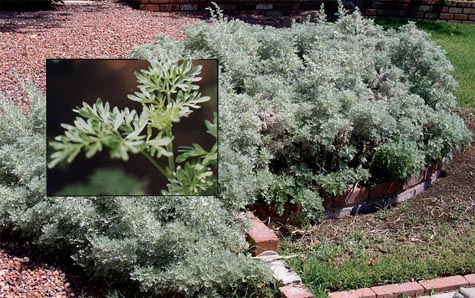
Pacific Northwest Medicinal Plant Guide (Check out all plants growing in Tryon Farm's medicinal garden!)
- Login to post comments



Witch Hazel (Hamamelis virginiana) Native to Eastern N. America
Witch Hazel (Hamamelis virginiana)
Parts used: leaves are harvested in the summer and fall while the bark is harvested in the spring.
Medicinal uses: Soothes cuts, bruises, sprains, insect bites, burns, and sunburns. Also used to control internal and external bleeding, to treat aching joints and sore muscles.
Cautions: Take internally only under professional supervision (Chevallier 104).
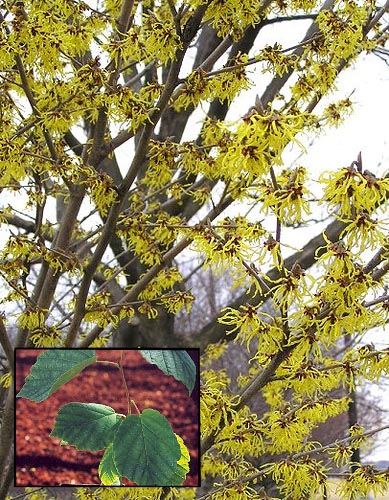
Pacific Northwest Medicinal Plant Guide (Check out all plants growing in Tryon Farm's medicinal garden!)
- Login to post comments



Wintergreen (Gaultheria procumbens) Native
Wintergreen (Gaultheria procumbens)
Parts used: leaves, fruits, essential oil
Medicinal uses: Strongly anti-inflammatory, antiseptic, and soothing to the digestive system; effective remedy for rheumatic and arthritic problems; taken as a tea relieves flatulence and colic; the essential oil in the form of an ointment or liniment brings relief to inflamed, swollen, or sore muscles, ligaments, and joints and can also prove valuable in treating sciatica
Cautions: Those who are sensitive to aspirin should not take wintergreen internally. Essential oil should never be taken internally nor applied, even well diluted, to the skin of those under the age of 12 unless closely monitored (Chevallier 214-5).
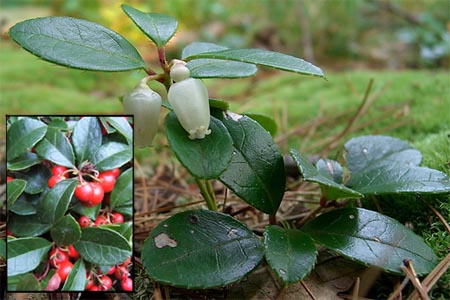
Pacific Northwest Medicinal Plant Guide (Check out all plants growing in Tryon Farm's medicinal garden!)
- Login to post comments



Winecap stropharia (Stropharia rugosar-annulata) Non-Native
Winecap stropharia (Stropharia rugosar-annulata)
Parts used: young mushrooms
Edible uses: The young fruiting bodies or mushrooms of this species are recommended due to their firmness and lack of bugs. The buttons of this species can reach 5-6” in diameter while still immature. They are meaty and rich and are well paired in meat sauces and sautés. When large, it can be cut into strips, brushed with olive oil, balsamic vinegar, sprinkled with herbs, salt and pepper and grilled to perfection.
(www.mushroomthejournal.com/mhma/edibles.htm)
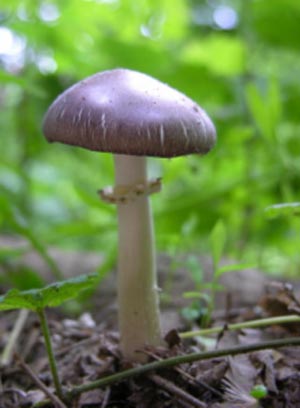
Pacific Northwest Medicinal Plant Guide (Check out all plants growing in Tryon Farm's medicinal garden!)
- Login to post comments



Willow (Salix spp.) some varieties Native
Willow (Salix spp.) some varieties
Parts used: bark, leaves
Medicinal uses: Formerly used to staunch internal bleeding as an astringent. Tea made from the dried bark is used against fever, flu, rheumatism, headaches, and other minor pain. By reducing sweating, white willow helps hot flashes and night sweats.
Cautions: Do not use if sensitive to aspirin. Do not take if pregnant or nursing (Chevallier 129).
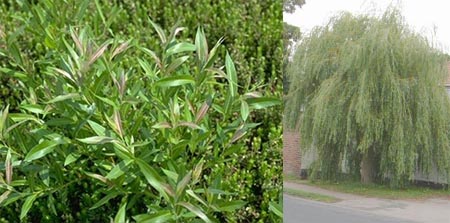
Pacific Northwest Medicinal Plant Guide (Check out all plants growing in Tryon Farm's medicinal garden!)
- Login to post comments



Wild ginger (Asarum canadense) Native
Wild ginger (Asarum canadense)
Parts used: root, leaves
Medicinal and other uses: Dried root has a spicy, slightly bitter taste often used as a ginger (Zingiber officinale) substitute; ginger scented leaves can be added to salads; root oil has been used in perfumes; root is a digestive tonic used for colic and flatulence; Native Americans used it as a contraceptive and to treat colds, sore throats, nervous conditions, and cramps; the root contains an antitumor compound, aristolochic acid
Cautions: None stated (Bremness 149).

Pacific Northwest Medicinal Plant Guide (Check out all plants growing in Tryon Farm's medicinal garden!)
- Login to post comments



Western Red Cedar (Thuja plicata) Native
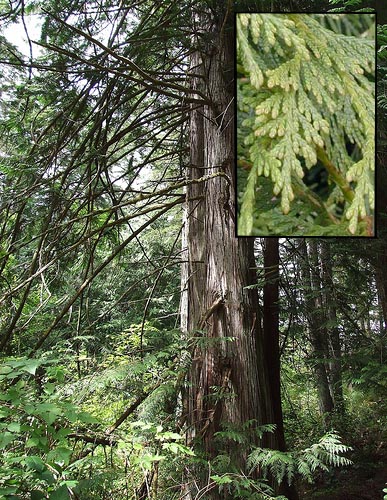 Western Red Cedar (Thuja plicata)
Western Red Cedar (Thuja plicata)
Medicinal uses: collect in summer/fall from young trees—highest oil content, antifungal, antibacterial—stimulates phagocytosis, helps athlete's foot, ringworm, jock itch, nail fungus, chronic vaginitis, stimulates smooth muscle—helps with respiratory, urinary tract, and reproductive system problems, can make tea, tincture, cold infusion, steam
Internal uses include: boiling limbs to make a tuberculosis treatment, chewing leaf buds for sore lungs, boiling leaves to make a cough remedy, making a decoction of leaves to treat colds, chewing leaf buds to relieve toothache pain, making an infusion to treat stomach pain and diarrhea, chewing the inner bark of a small tree to bring about delayed menstruation, making a bark infusion to treat kidney complaints, making an infusion of the seeds to treat fever using a weak infusion internally to treat rheumatism and arthritis
External uses include: making a decoction of leaves to treat rheumatism, washing with an infusion of twigs to treat venereal disease, including the human papilloma virus and other sexually transmitted diseases, making a poultice of boughs or oil to treat rheumatism, making a poultice of boughs or oil to threat bronchitis, making a poultice or oil from inner bark to treat skin diseases, including topical fungal infections and warts, using shredded bark to cauterize and bind wounds. Extracts of red cedar have been shown to have antibacterial properties against common bacteria. Compounds with antifungal properties have also been isolated.
Preparations:Most preparations of red cedar call for boiling the medicinal parts to make a decoction or for making a tea or infusion. Little information exists on dosages. An essential oil can be prepared from red cedar. This oil is meant to be used topically. It is toxic if taken internally, and has the ability to produce convulsions or even death if taken in even small quantities. A 1999 study done in Switzerland noted an increase in poisoning deaths from plant products, including Thuja, due possibly to an increase in people practicing herbal healing and aromatherapy.
Precautions:As noted above, the oil of all species of thuja can cause convulsions. Decoctions of the bark of red cedar can also cause miscarriage. Therefore, pregnant women should not use red cedar.
Side Effects:Many people develop asthma and bronchial spasms from exposure to red cedar or red cedar dust. This is due to an allergic reaction to plicatic acid present in the wood. Red cedar induced asthma is a serious occupational hazard to loggers in western North America.
Interactions:There are no studies and little observational evidence to indicate whether red cedar interacts with other herbs or with Western pharmaceuticals.
Pacific Northwest Medicinal Plant Guide (Check out all plants growing in Tryon Farm's medicinal garden!)
- Login to post comments



Wild geranium (Geranium maculatum) Native
Wild geranium (Geranium maculatum)
Parts used: leaves
Medicinal and other uses: Wild geranium can be used as a salad green. It can also be used to treat dysentery and diarrhea. It also acts as a blood coagulant.
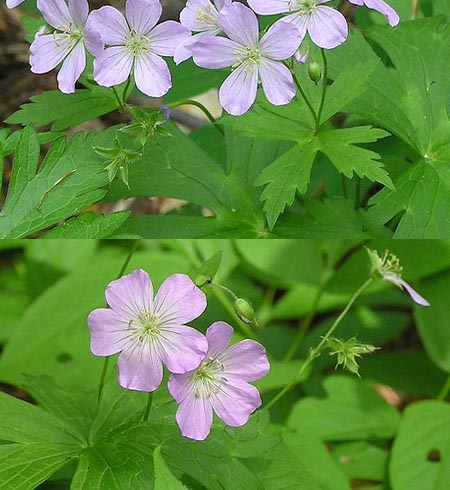
Pacific Northwest Medicinal Plant Guide (Check out all plants growing in Tryon Farm's medicinal garden!)
- Login to post comments



Feedback and participation welcome! Please send bug reports to web@tryonfarm.org







